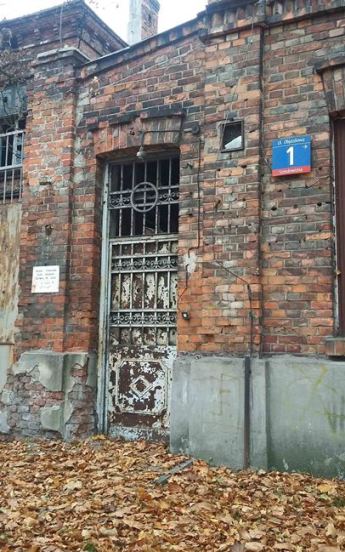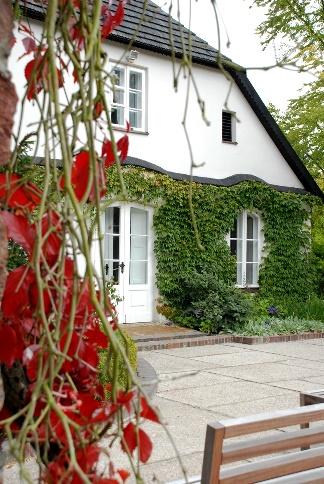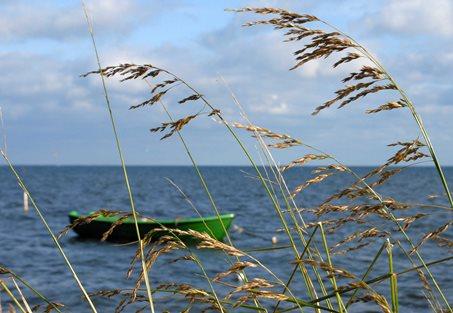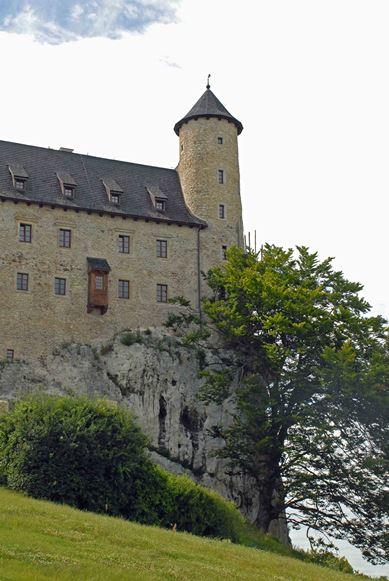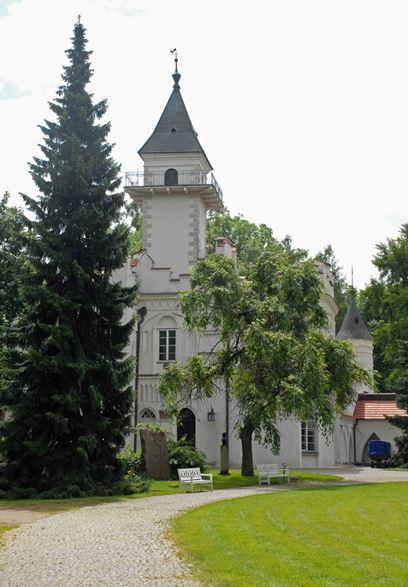
I went to Radziejowice with my husband who was taking part in the Chełmoński Run. Since a 10 km run takes a while and I was there with our children, we had to pass the time somehow while waiting for Dad. It turned out that the park-palace complex in Radziejowice is very well suited for that. We found a Greek revivalist Palace, neo-Gothic Castle, Larch Manor House, Swiss House, an old forge and a huge park with numerous ponds.
The name Radziejowice originates from the name of its first owner – the Radziejowski family, which settled there in the 15th century, building the oldest family residence. The grounds, together with all its buildings, have changed hands many times over the course of time. The families of Prażmowski, Ossoliński and Krasiński used to live here. In the 17th century the palace was visited by the baronage, priesthood and kings Zygmunt III Waza, Władysław IV and Jan III Sobieski. The ambition of the Krasińskis – especially the primate Michał, the last of the Krasinskis – was the creation of an intellectual and cultural Warsaw venue in Radziejowice. Among others, the socialites who frequented the place were: Narcyza Żchowska, Wojciech and Juliusz Kossak, Jarosław Iwaszkiewicz, Henryk Sienkiewicz and Józeł Chełmoński. In 1928 the first movie adaptation of Adam Mickiewicz's "Pan Tadeusz" was shot in Radziejowice.
The main attraction of the palace's museum is Poland's largest exhibition of Józef Chełmoński paintings and a collection of the great painter's remembrances. Even though he did not live in Radziejowice but in nearby Kulkówka, he used to be a frequent visitor here.
The current appearance of the palace does not resemble the old baroque residence of the Radziejowski family. Rebuilt at the end of the 18th century and completed at the beginning of the 19th century, it acquired a Greek revivalist character. Museum halls, galleries and visitor apartments can all be found here. The oldest part of the complex constitutes a castle rebuilt from ruins back in the 19th century, consisting of a kitchen and 2 historical apartments.




